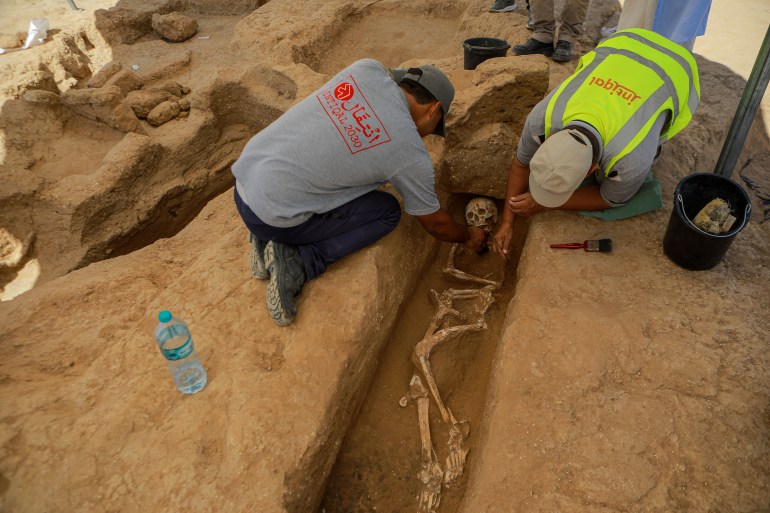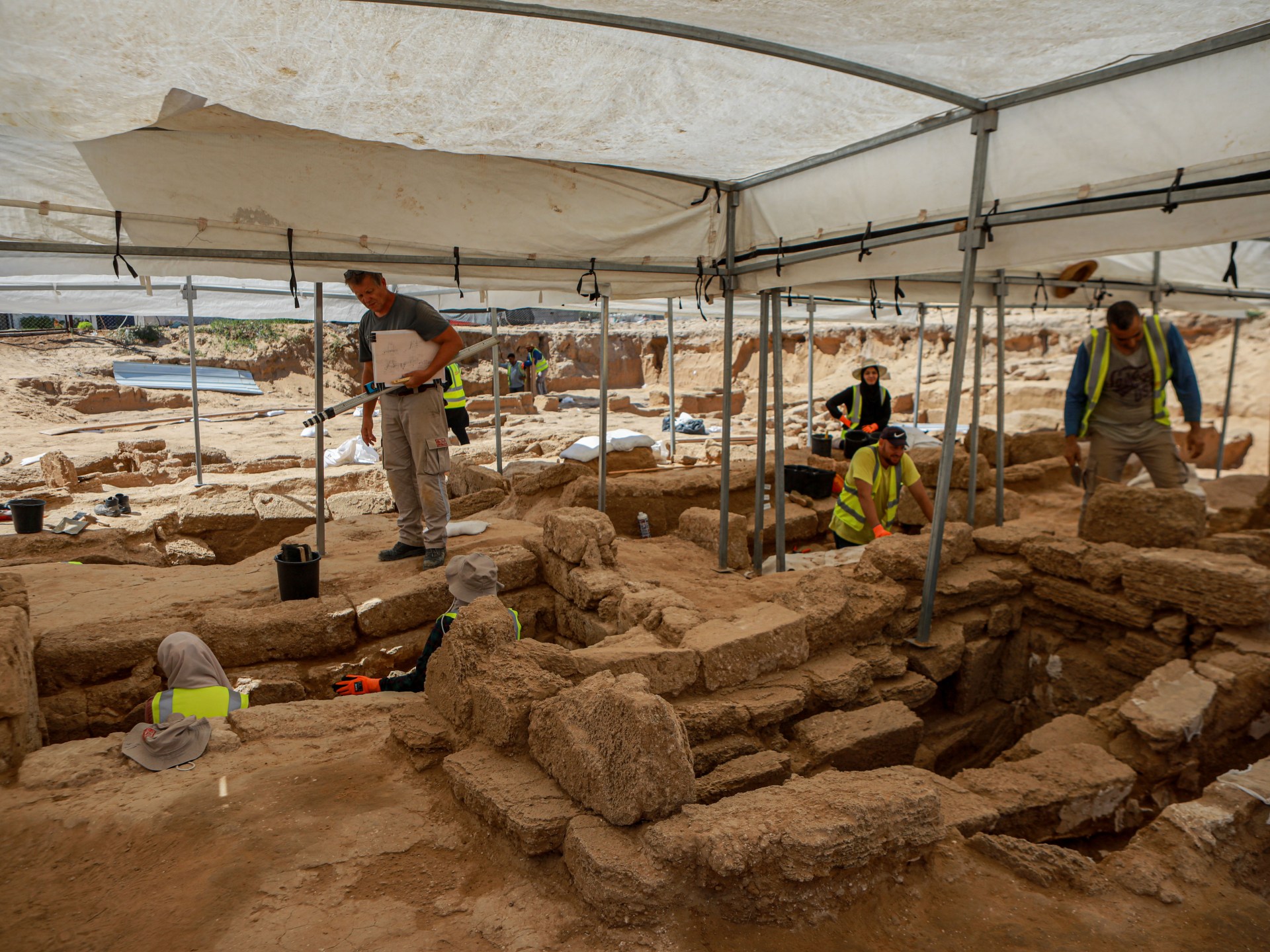Gaza City, Palestine – The discovery of four Roman-era tombs in the Gaza Strip indicates the long history of settlement, agriculture, industry and trade in Gaza, according to a Palestinian archaeologist.
Four tombs dating back 2,000 years were discovered at a Roman-era cemetery in the Gaza Strip on Saturday.
“Field research efforts are still ongoing within the Roman cemetery, with the involvement of Palestinian experts and the participation of French archaeologists,” Jamal Abu Reida, the Director-General of Antiquities at the Ministry of Tourism and Antiquities, told Al Jazeera.
“The ongoing work is part of the long journey to uncover historical and archaeological discoveries, which have been found in various areas of the Gaza Strip in recent years,” he added.
The discovery of the four tombs brought the total number of unearthed graves at the archaeological site, which is spread over an area of nearly 4,000 square meters (43,000 square feet), to 134, the Ministry of Antiquities and Tourism in the Gaza Strip announced on Saturday.

Palestinian archaeologist, Fadel al-Otol, said that the cemetery is currently undergoing a process of study, restoration and maintenance, with the aim of eventually opening it to visitors and researchers.
Al-Otol confirmed the remarkable discovery of two lead coffins, one intricately engraved with grape harvest motifs, and the other featuring dolphins swimming in water.

Some of the graves are distinguished by pyramid designs, and fragments of pottery and metal pieces used in funeral rituals have also been found.
Al-Otol who leads a team of technicians and engineers called Intiqal, emphasised the importance of actively seeking additional discoveries, considering Gaza’s status as a city with a profoundly rich heritage that encompasses antiquities from diverse eras and civilizations.
He also expressed his deep regret over the lack of financial resources that are hindering the continuation of excavation work at other archaeological sites in the Palestinian enclave, which has been under an Israeli land, sea and air blockade for more than 15 years.

“Gaza holds a place of historical significance as one of the world’s oldest cities for its strategic geographical location at the intersection of the Asian and African continents,” he told Al Jazeera.
Al-Otol lamented the lack of resources for the maintenance of antiquities amid the difficult living conditions in the enclave – home to two million people. The excavation and restoration work is funded by the British Council’s Fund for the Protection of Culture.

“These archaeological findings show the historical roots and Palestinian heritage, which extend over thousands of years, debunking all narratives propagated by the Israeli occupation that portray Palestine as a land without a people and a people without a land,” al-Otal said.
Last December, the 2,000-year-old Roman cemetery was discovered while Egyptian bulldozers were working on the construction of the Egyptian city as part of the reconstruction plans in the northwest of the Gaza Strip.

This significant discovery, confirmed by a French nongovernmental organisation, revealed that the cemetery had been buried for centuries beneath Gaza’s soil and dates back to the ancient Roman era, spanning between the first and second centuries AD. The coffins within the cemetery were adorned with intricate paintings and laurel leaf wreaths.
The revelation of the Roman cemetery followed another archaeological find made three months ago, when mosaic floors dating back to the Byzantine era, approximately 1,800 years old, were discovered within agricultural land east of the Bureij refugee camp, situated in the central part of the Gaza Strip.
Gaza has been grappling with severe poverty – more than 80 percent of the people are dependent on aid. The Israeli blockade has significantly restricted the movement of goods and people in and out of Gaza, contributing to the challenging humanitarian situation in the Strip.
